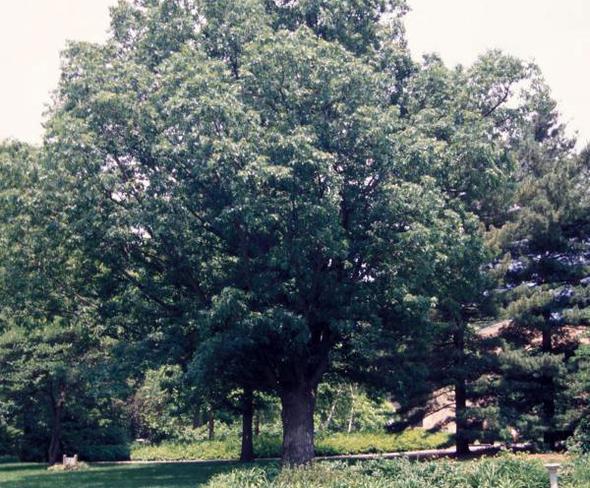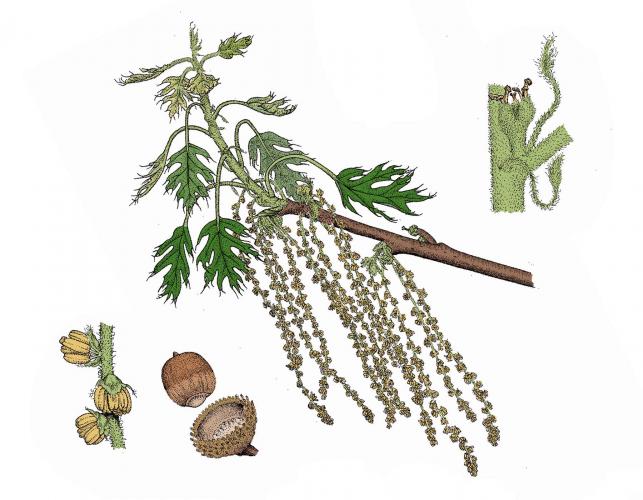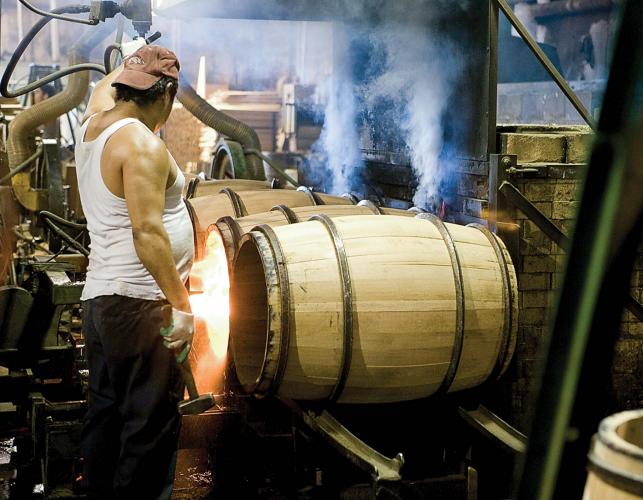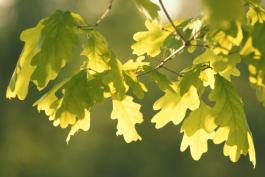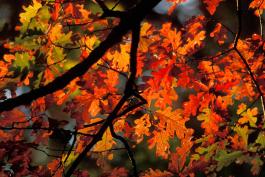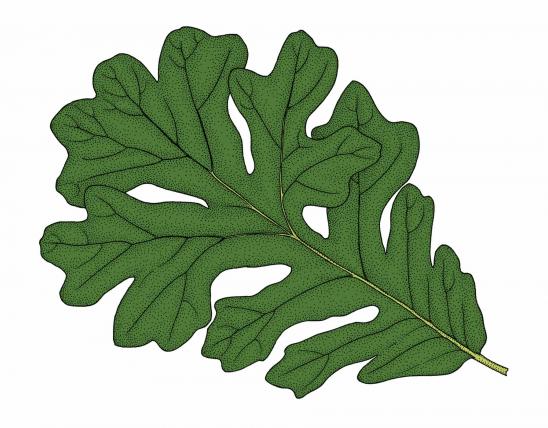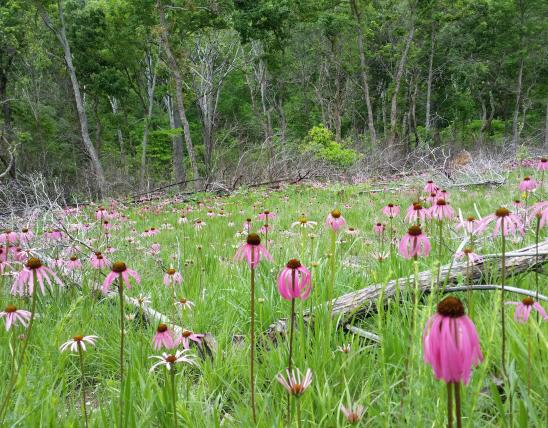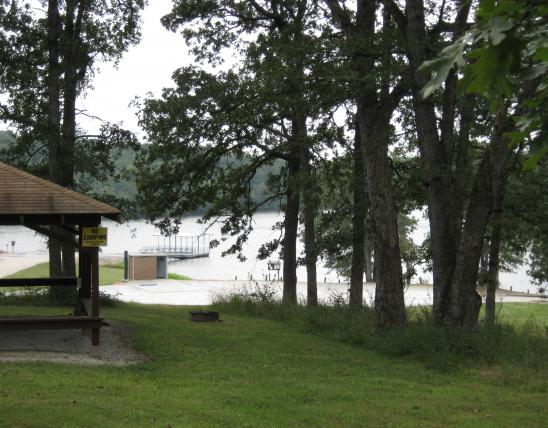
White oak is a large tree with a long, straight trunk and a broad, rounded crown.
Leaves are alternate, simple, 5–9 inches long, 2–4 inches wide; margin entire, with 6–10 lobes; lobes rounded at the tip; upper surface bright green, smooth, often shiny; lower surface whitened, smooth (without hairs). In fall, color can range from uninteresting browns to beautiful claret reds.
Bark is light gray, with shallow grooves and flat, loose ridges; large limbs and branches scaly.
Twigs are slender to stout, green to reddish-green, and hairy when young, turning red-brown to ash gray and smooth with age.
Flowering is in April–May. Male and female flowers are on the same tree; male flowers in drooping catkins, female flowers small and in leaf axils.
Fruits September–October, acorn solitary or in pairs; nut light brown, shiny, widest near the base or middle, tapering to a round tip ¾–1 inch long; cup covering up to ¼ of the nut, bowl-shaped to saucer-shaped, light brown; scales numerous, surface warty or corky, flattened, knobby. Acorns ripen in autumn of the first year.
Similar species: More than 20 species of oaks live in Missouri, not counting cultivated types that never escape. White oak is the banner species for a large subset of native oaks, called the "white oak group." (Our other large subgroup is the "red oak group" or "black oak group.") Missouri oaks in the white oak group include overcup, swamp chestnut, chinkapin, dwarf chestnut, and post oaks. They share characteristics such as acorns maturing during the first autumn after flowering (so, no immature acorns present on the tree during winter); leaves often having rounded lobes; a complete lack of bristle-tips along the edge of the leaf blade; the axils of major veins on the undersurface of leaves without noticeable tufts of hairs; and bark light to medium gray, splitting into loose or somewhat persistent ridges, plates, blocks, or strips.
Height: to 120 feet.
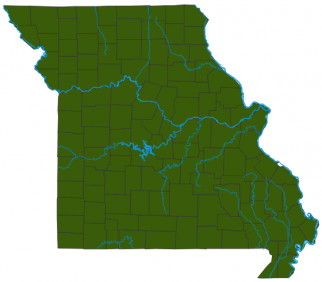
Statewide.
Habitat and Conservation
Occurs on dry upland slopes and ridges; also on low ground of valleys and ravine bottoms. One of the most attractive, long-lived (over 300 years) shade trees in Missouri. One of the state’s most ubiquitous trees, found in a wide variety of forest, woodland, and savanna natural communities throughout the state.
Human Connections
The wood is second only to walnut in unit value. Once used extensively in ship construction; now used for interior finishing, veneer, cabinets, general construction, whiskey and wine barrels, and more. Native Americans made a bread using the ground acorns. The bark was used medicinally.
Ecosystem Connections
The acorns are an important food for blue jays, woodpeckers, wood ducks, wild turkeys, ruffed grouse, northern bobwhites, mice, squirrels, raccoons, and deer. Large, strong trees provide nesting space for many birds and mammals, and a sturdy structure for vines and other smaller plants to climb on.



